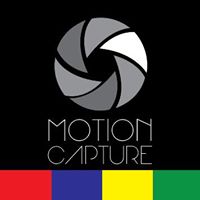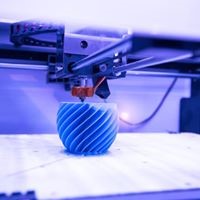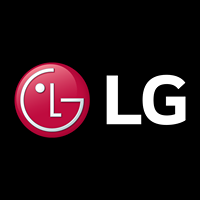Posted on
July 27th, 2018 by
RESCUECOM
 Motion capture is not new to film, nor is it any longer a particularly difficult thing to do. Simply put, motion capture (mocap or mo-cap for short), is the process of recording the movement of objects or people. This has applications beyond filmmaking including many fields such as sports, government, military, medical, and robotics. Its main use to date, however, had been in the enhancement of films using computer technology to either add realism or place elements it would not be safe, practical, or financially advantageous to do otherwise. While referred to as motion tracking when used for other purposes, in filmmaking and games this process more commonly refers to “match moving.” This is a cinematic technique allowing for the insertion of computer graphics into live-action footage and takes more skill to do so with the correct position, scale, orientation, and motion. This means that, at its most advanced, only high budget films can achieve truly professional results and must rely on professional cinematographers as well as a huge staff of animators. It can take a lot of money and a great deal of skill to get the cleanest, most realistic results as well as to insert computerized elements into a film that are all perfect relative to all of the objects or actors in the shot. This does not mean that others cannot use it effectively, though that has been the case in years past. Now, with advancements in tech bringing the necessary software to utilize motion capture to users commercially on a much larger scale, it is possible for more and more less professional videographers to use without needing the money or professional expertise formerly needed. Not only that, but evolving tech makes it much easier and faster to use to a smaller extent. Read more »
Motion capture is not new to film, nor is it any longer a particularly difficult thing to do. Simply put, motion capture (mocap or mo-cap for short), is the process of recording the movement of objects or people. This has applications beyond filmmaking including many fields such as sports, government, military, medical, and robotics. Its main use to date, however, had been in the enhancement of films using computer technology to either add realism or place elements it would not be safe, practical, or financially advantageous to do otherwise. While referred to as motion tracking when used for other purposes, in filmmaking and games this process more commonly refers to “match moving.” This is a cinematic technique allowing for the insertion of computer graphics into live-action footage and takes more skill to do so with the correct position, scale, orientation, and motion. This means that, at its most advanced, only high budget films can achieve truly professional results and must rely on professional cinematographers as well as a huge staff of animators. It can take a lot of money and a great deal of skill to get the cleanest, most realistic results as well as to insert computerized elements into a film that are all perfect relative to all of the objects or actors in the shot. This does not mean that others cannot use it effectively, though that has been the case in years past. Now, with advancements in tech bringing the necessary software to utilize motion capture to users commercially on a much larger scale, it is possible for more and more less professional videographers to use without needing the money or professional expertise formerly needed. Not only that, but evolving tech makes it much easier and faster to use to a smaller extent. Read more »

Posted on
July 20th, 2018 by
RESCUECOM
 Photography has existed for over 150 years, and photography has been a hobby everyone could enjoy for around 100. The term “computational photography,” (also called “computational imaging”) of course, is a much more modern term that goes far beyond what traditional photography has to offer. Its purpose is to overcome the limitations of traditional photography using tech. It utilizes the newest developments in photographic technology to improve everything from optics and sensors to composition, style, and more. Its intent is simply to improve the way photographers process, manipulate, and interact with arguably the most simple and basic form of visual media available to us today. While some still prefer the raw nature of traditionally taken photos, computational photography is a means of which everyone can take advantage to improve the quality of the photos they take. This means it has application for those who do not know the technical aspects of photography as well as for professionals, and especially in the professional realm. It provides obvious advantages in business, web design, presentation, the legal field, medicine, and much more. While as a hobby it may have its detractors, there is no denying the benefit it could provide when the quality of clarity what one can see in an image can make a very important determination. Read more »
Photography has existed for over 150 years, and photography has been a hobby everyone could enjoy for around 100. The term “computational photography,” (also called “computational imaging”) of course, is a much more modern term that goes far beyond what traditional photography has to offer. Its purpose is to overcome the limitations of traditional photography using tech. It utilizes the newest developments in photographic technology to improve everything from optics and sensors to composition, style, and more. Its intent is simply to improve the way photographers process, manipulate, and interact with arguably the most simple and basic form of visual media available to us today. While some still prefer the raw nature of traditionally taken photos, computational photography is a means of which everyone can take advantage to improve the quality of the photos they take. This means it has application for those who do not know the technical aspects of photography as well as for professionals, and especially in the professional realm. It provides obvious advantages in business, web design, presentation, the legal field, medicine, and much more. While as a hobby it may have its detractors, there is no denying the benefit it could provide when the quality of clarity what one can see in an image can make a very important determination. Read more »

Posted on
July 13th, 2018 by
RESCUECOM
 3D printing is something that most people would have considered impossible as recently as fifty years ago. In fact, the concept was not something anyone had even begun to put into motion until the early 1980s. As technology progresses, however, we have not only discovered to means for 3D printing but have continued to improve upon it. The question for some, though, is this: what exactly is 3D printing? Simply put, 3D printing is a means of creating a physical object from a digital design using a specialized machine. There are different 3D printing technologies and materials that we can now print with, but all of these work based on the same principle: the program turns a digital model into a solid three-dimensional physical object by adding material layer by layer. If this seems amazing, consider that it is now becoming somewhat commonplace at schools, libraries, and similar institutions while some companies have even created models for use in the home. Not only that, but the process has been further advanced with the creation of 3D pens, with dozens of models now available on the market. Before going into detail, though, there are some other more basic facts to consider about 3D printing and its many implications. Read more »
3D printing is something that most people would have considered impossible as recently as fifty years ago. In fact, the concept was not something anyone had even begun to put into motion until the early 1980s. As technology progresses, however, we have not only discovered to means for 3D printing but have continued to improve upon it. The question for some, though, is this: what exactly is 3D printing? Simply put, 3D printing is a means of creating a physical object from a digital design using a specialized machine. There are different 3D printing technologies and materials that we can now print with, but all of these work based on the same principle: the program turns a digital model into a solid three-dimensional physical object by adding material layer by layer. If this seems amazing, consider that it is now becoming somewhat commonplace at schools, libraries, and similar institutions while some companies have even created models for use in the home. Not only that, but the process has been further advanced with the creation of 3D pens, with dozens of models now available on the market. Before going into detail, though, there are some other more basic facts to consider about 3D printing and its many implications. Read more »

Posted on
July 6th, 2018 by
RESCUECOM
 Companies have continually striven toward combining better picture and portability in a larger size in the design of TVs. Simply put, bigger is better and making it lightweight so it is easy to carry and set up is certainly a bonus. It takes great leaps in TV technology to be able to continue to make TVs larger while not only maintaining but drastically improving the picture without making them impossible to move. Thus, it is something toward which every TV brand is continuously striving, and now a new innovation some never thought possible and is, in fact, the stuff of sci-fi fantasy, is now available on the consumer market. In 2016, LG debuted an 18-inch TV that was mere centimeters thin, the screen of which could be folded or rolled up. At the time, the display was good but not exceptional, but all this is new and improved in a greater achievement: the new LG Design 65-inch 4K OLED rollable TV. Read more »
Companies have continually striven toward combining better picture and portability in a larger size in the design of TVs. Simply put, bigger is better and making it lightweight so it is easy to carry and set up is certainly a bonus. It takes great leaps in TV technology to be able to continue to make TVs larger while not only maintaining but drastically improving the picture without making them impossible to move. Thus, it is something toward which every TV brand is continuously striving, and now a new innovation some never thought possible and is, in fact, the stuff of sci-fi fantasy, is now available on the consumer market. In 2016, LG debuted an 18-inch TV that was mere centimeters thin, the screen of which could be folded or rolled up. At the time, the display was good but not exceptional, but all this is new and improved in a greater achievement: the new LG Design 65-inch 4K OLED rollable TV. Read more »
 Motion capture is not new to film, nor is it any longer a particularly difficult thing to do. Simply put, motion capture (mocap or mo-cap for short), is the process of recording the movement of objects or people. This has applications beyond filmmaking including many fields such as sports, government, military, medical, and robotics. Its main use to date, however, had been in the enhancement of films using computer technology to either add realism or place elements it would not be safe, practical, or financially advantageous to do otherwise. While referred to as motion tracking when used for other purposes, in filmmaking and games this process more commonly refers to “match moving.” This is a cinematic technique allowing for the insertion of computer graphics into live-action footage and takes more skill to do so with the correct position, scale, orientation, and motion. This means that, at its most advanced, only high budget films can achieve truly professional results and must rely on professional cinematographers as well as a huge staff of animators. It can take a lot of money and a great deal of skill to get the cleanest, most realistic results as well as to insert computerized elements into a film that are all perfect relative to all of the objects or actors in the shot. This does not mean that others cannot use it effectively, though that has been the case in years past. Now, with advancements in tech bringing the necessary software to utilize motion capture to users commercially on a much larger scale, it is possible for more and more less professional videographers to use without needing the money or professional expertise formerly needed. Not only that, but evolving tech makes it much easier and faster to use to a smaller extent. Read more »
Motion capture is not new to film, nor is it any longer a particularly difficult thing to do. Simply put, motion capture (mocap or mo-cap for short), is the process of recording the movement of objects or people. This has applications beyond filmmaking including many fields such as sports, government, military, medical, and robotics. Its main use to date, however, had been in the enhancement of films using computer technology to either add realism or place elements it would not be safe, practical, or financially advantageous to do otherwise. While referred to as motion tracking when used for other purposes, in filmmaking and games this process more commonly refers to “match moving.” This is a cinematic technique allowing for the insertion of computer graphics into live-action footage and takes more skill to do so with the correct position, scale, orientation, and motion. This means that, at its most advanced, only high budget films can achieve truly professional results and must rely on professional cinematographers as well as a huge staff of animators. It can take a lot of money and a great deal of skill to get the cleanest, most realistic results as well as to insert computerized elements into a film that are all perfect relative to all of the objects or actors in the shot. This does not mean that others cannot use it effectively, though that has been the case in years past. Now, with advancements in tech bringing the necessary software to utilize motion capture to users commercially on a much larger scale, it is possible for more and more less professional videographers to use without needing the money or professional expertise formerly needed. Not only that, but evolving tech makes it much easier and faster to use to a smaller extent. Read more »




 Photography has existed for over 150 years, and photography has been a hobby everyone could enjoy for around 100. The term “computational photography,” (also called “computational imaging”) of course, is a much more modern term that goes far beyond what traditional photography has to offer. Its purpose is to overcome the limitations of traditional photography using tech. It utilizes the newest developments in photographic technology to improve everything from optics and sensors to composition, style, and more. Its intent is simply to improve the way photographers process, manipulate, and interact with arguably the most simple and basic form of visual media available to us today. While some still prefer the raw nature of traditionally taken photos, computational photography is a means of which everyone can take advantage to improve the quality of the photos they take. This means it has application for those who do not know the technical aspects of photography as well as for professionals, and especially in the professional realm. It provides obvious advantages in business, web design, presentation, the legal field, medicine, and much more. While as a hobby it may have its detractors, there is no denying the benefit it could provide when the quality of clarity what one can see in an image can make a very important determination.
Photography has existed for over 150 years, and photography has been a hobby everyone could enjoy for around 100. The term “computational photography,” (also called “computational imaging”) of course, is a much more modern term that goes far beyond what traditional photography has to offer. Its purpose is to overcome the limitations of traditional photography using tech. It utilizes the newest developments in photographic technology to improve everything from optics and sensors to composition, style, and more. Its intent is simply to improve the way photographers process, manipulate, and interact with arguably the most simple and basic form of visual media available to us today. While some still prefer the raw nature of traditionally taken photos, computational photography is a means of which everyone can take advantage to improve the quality of the photos they take. This means it has application for those who do not know the technical aspects of photography as well as for professionals, and especially in the professional realm. It provides obvious advantages in business, web design, presentation, the legal field, medicine, and much more. While as a hobby it may have its detractors, there is no denying the benefit it could provide when the quality of clarity what one can see in an image can make a very important determination.  3D printing is something that most people would have considered impossible as recently as fifty years ago. In fact, the concept was not something anyone had even begun to put into motion until the early 1980s. As technology progresses, however, we have not only discovered to means for 3D printing but have continued to improve upon it. The question for some, though, is this: what exactly is 3D printing? Simply put, 3D printing is a means of creating a physical object from a digital design using a specialized machine. There are different 3D printing technologies and materials that we can now print with, but all of these work based on the same principle: the program turns a digital model into a solid three-dimensional physical object by adding material layer by layer. If this seems amazing, consider that it is now becoming somewhat commonplace at schools, libraries, and similar institutions while some companies have even created models for use in the home. Not only that, but the process has been further advanced with the creation of 3D pens, with dozens of models now available on the market. Before going into detail, though, there are some other more basic facts to consider about 3D printing and its many implications.
3D printing is something that most people would have considered impossible as recently as fifty years ago. In fact, the concept was not something anyone had even begun to put into motion until the early 1980s. As technology progresses, however, we have not only discovered to means for 3D printing but have continued to improve upon it. The question for some, though, is this: what exactly is 3D printing? Simply put, 3D printing is a means of creating a physical object from a digital design using a specialized machine. There are different 3D printing technologies and materials that we can now print with, but all of these work based on the same principle: the program turns a digital model into a solid three-dimensional physical object by adding material layer by layer. If this seems amazing, consider that it is now becoming somewhat commonplace at schools, libraries, and similar institutions while some companies have even created models for use in the home. Not only that, but the process has been further advanced with the creation of 3D pens, with dozens of models now available on the market. Before going into detail, though, there are some other more basic facts to consider about 3D printing and its many implications.  Companies have continually striven toward combining better picture and portability in a larger size in the design of TVs. Simply put, bigger is better and making it lightweight so it is easy to carry and set up is certainly a bonus. It takes great leaps in TV technology to be able to continue to make TVs larger while not only maintaining but drastically improving the picture without making them impossible to move. Thus, it is something toward which every TV brand is continuously striving, and now a new innovation some never thought possible and is, in fact, the stuff of sci-fi fantasy, is now available on the consumer market. In 2016, LG debuted an 18-inch TV that was mere centimeters thin, the screen of which could be folded or rolled up. At the time, the display was good but not exceptional, but all this is new and improved in a greater achievement: the new LG Design 65-inch 4K OLED rollable TV.
Companies have continually striven toward combining better picture and portability in a larger size in the design of TVs. Simply put, bigger is better and making it lightweight so it is easy to carry and set up is certainly a bonus. It takes great leaps in TV technology to be able to continue to make TVs larger while not only maintaining but drastically improving the picture without making them impossible to move. Thus, it is something toward which every TV brand is continuously striving, and now a new innovation some never thought possible and is, in fact, the stuff of sci-fi fantasy, is now available on the consumer market. In 2016, LG debuted an 18-inch TV that was mere centimeters thin, the screen of which could be folded or rolled up. At the time, the display was good but not exceptional, but all this is new and improved in a greater achievement: the new LG Design 65-inch 4K OLED rollable TV.